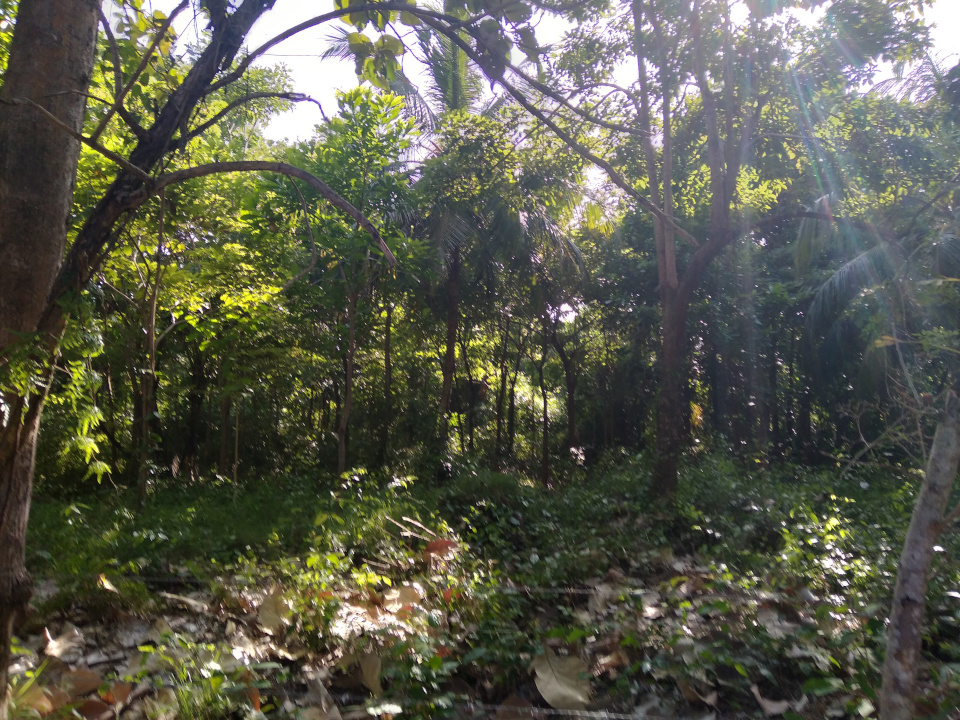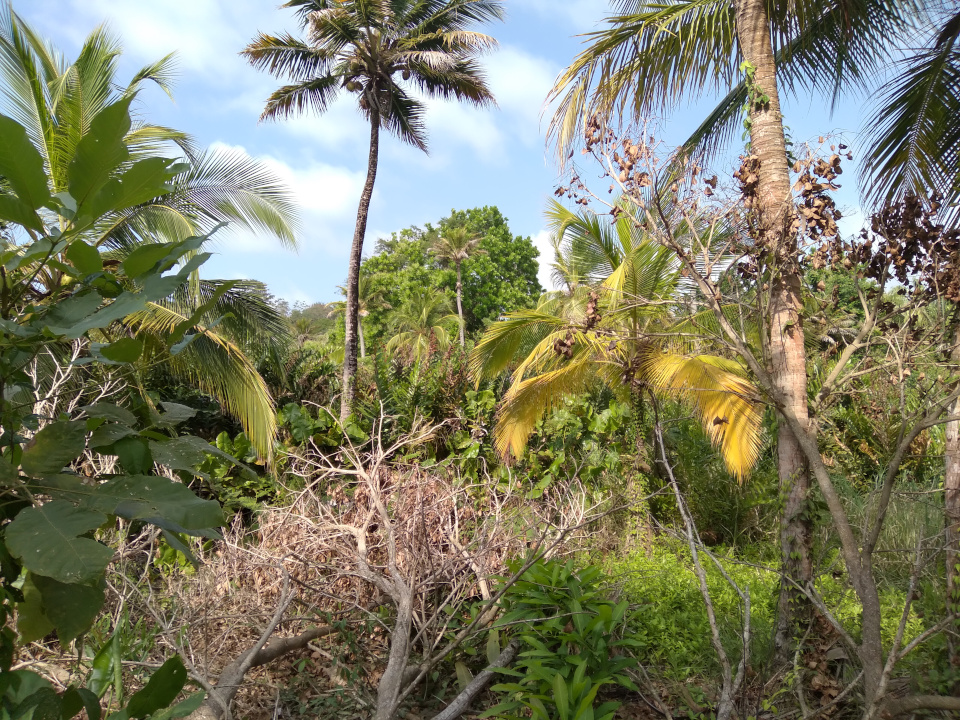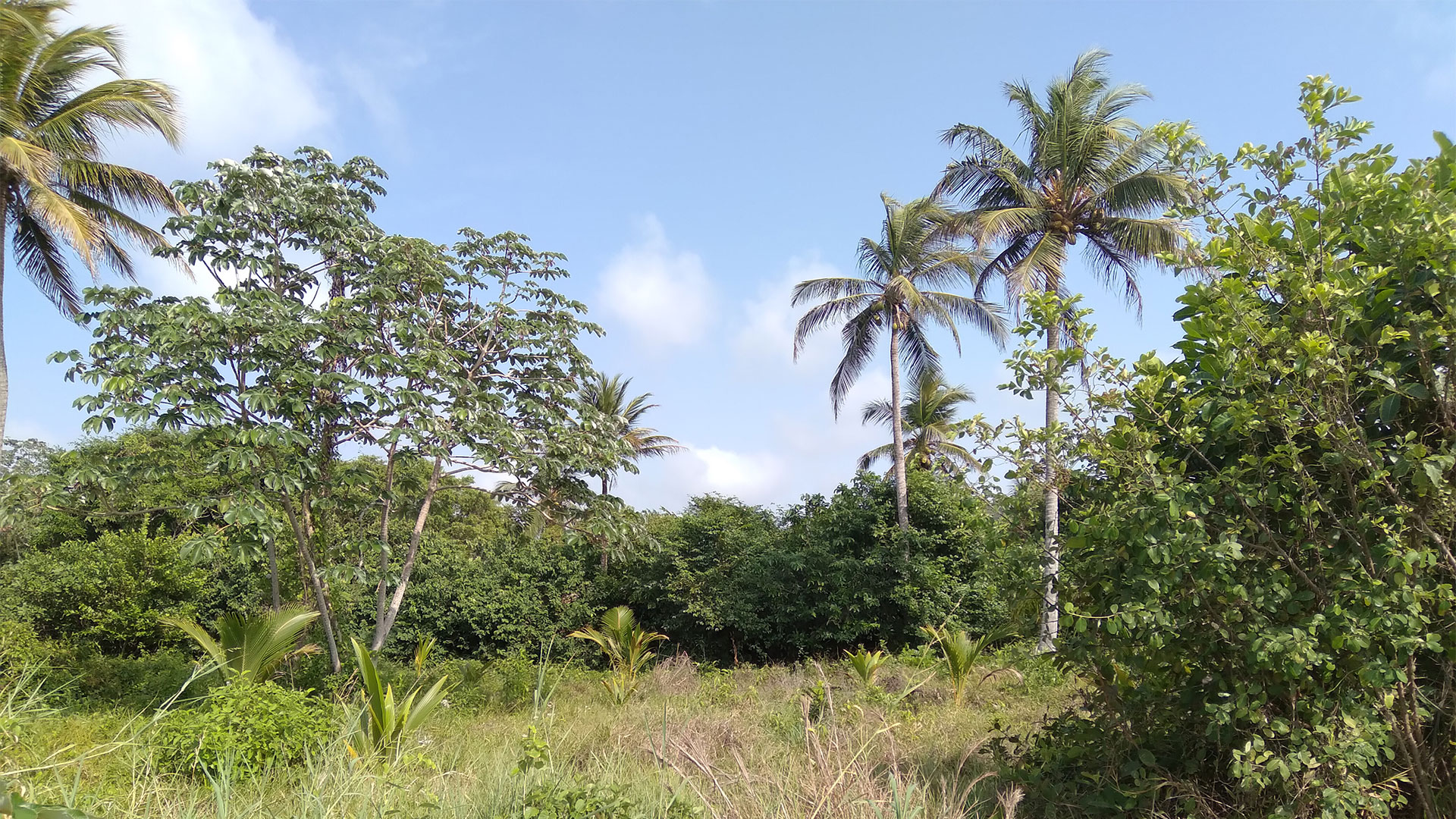How do you create a forest out of nothing? with patience, love and hard work… but also with the help of birds, small mammals and the wind. You have to work with the nature and not against it.

The area of Urabá, where Jaibazul is located, was historically deforested for extensive cattle ranching, as well as for plantain and banana crops, which led to a progressive loss of fauna and flora. In 2016, there was little or nothing to conserve in Jaibazul, the trees that remained standing mostly belonged to species with no known use or commercial value, barely a few oaks (Tabeuia rosacea), cedars (Cedrela odorata) and wild cashew (Anacardium excelsium) in hard-to-reach areas, there were none left of the once abundant timber trees such as mahogany (Switenia macrifilia) and colombian mahogany (cariniana pyriformis). The terrain was dominated by weeds and remnants of pasture once used for livestock that drowned out any seed. In Jaibazul I decided to do something different. The original ecosystem had been lost, no fauna and native forest were sighted, only isolated trees remained … however the damage was not irreversible, manually removing the weeds I found surviving young trees, which without competition for resources began to grow up quickly, as the land was left clean, new trees appeared product of natural reforestation. I adopted them to improve their survival rate although I do not know the species of most of them. In addition, I planted all kinds of trees to develop the forest, not in linear plantations or monoculture, but combining different species, just as it happens in nature. Ceibas (ceiba pentandra) next to mango trees (Mangifera indica). Mammoncillo trees (Melicoccus bijugatus) next to mahogany trees (Swietenia macrophylla) re-introduced. Monoculture impoverishes the forest, so I took the opposite path, I planted coconut palms (Coco nucifera), wine palms (Attalea butyracea) whose usefulness fell into disuse for people, but not for the birds who are happy in them; azaí palms (Euterpe oleracea), mouse-killing trees (Gliricidia sepium), moringa (Moringa oleifera), breadfruit (Artocarpus altilis), orange trees (Citrus × sinensis), teak (Tectona grandis) guavas (Psidium guajava), soursop (Annona muricata), guama (Inga edulis), gmelinas (gmelina arborea), copuazú (Theobroma grandiflorum), colombian mahogany (Cariniana pyriformis), jacaranda (Jacaranda caucana). I sowed practically all the seeds that passed through my hands with the aim of increasing biodiversity.

After 5 years and more than 5000 trees planted and cared until they become self-sufficient, it has not only been possible to create a forest, but to guarantee a refuge for different animal species today in danger. These include the critically endangered cotton-top tamarin (Saguinus oedipus) and the blue crab (Cardisoma guanhumi), as well as armadillos (Dasypus novemcinctus) and birds yet to be identified. Also 4 types of sea turtles spawn on Jaibazul beach: green sea turtle (Chelonia midas), Hawksbill turtle (Eretmochelys imbricata), loggerhead sea turtle (Caretta caretta) and leatherback sea turtle (Dermochelys coriacea).

